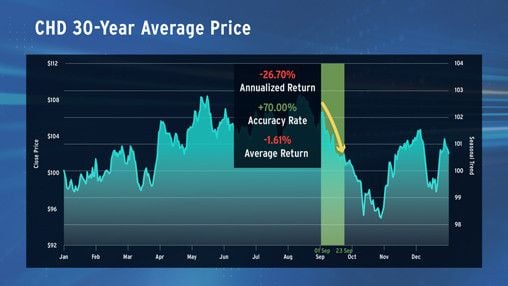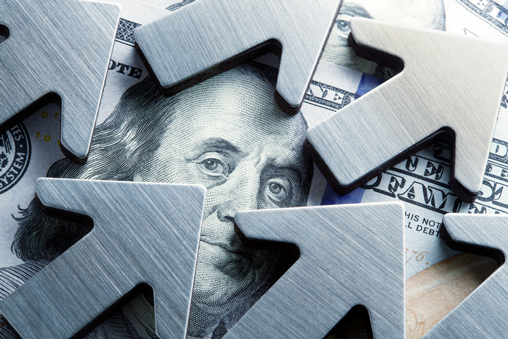Quant Ratings Updated on 135 Stocks Dear Reader, Last week’s choppy market action probably left investors feeling a little nauseous. While the S&P 500 ended the week essentially flat, it had both its worst and best days of the year. On Monday, concerns that the U.S. economy may be entering a recession continued to mount. It didn’t help that overseas markets (namely Japan) had already sold off sharply. That combined to create a spike in volatility, and the S&P 500 fell by 3% as a result. The Dow also lost over a thousand points (or 2.6%), while the NASDAQ tumbled 3.4%. Then, on Thursday, we learned that weekly initial jobless claims were less than economists had expected. The market normally doesn’t respond strongly to this report, but in this case, it surged on the news. In fact, the S&P 500 closed higher by 2.3%, posting its best day since 2022. The NASDAQ, meanwhile, rallied nearly 2.9%, and the Dow was up by about 1.8%. As I explained last week, this kind of volatility is typical for August. And this week could be especially bumpy, as we have some key economic data coming out that could move markets. This morning, the first key economic report was released: the July Producer Price Index (PPI). PPI was up 0.1% last month, down from a 0.2% rise in June. Economists were forecasting 0.2%. On an annual basis, the PPI increased 2.2% after climbing 2.7% in June. Stocks rallied in the wake of the PPI reading. Now, the good news is that today’s PPI numbers suggest that the Federal Reserve may be on track to begin cutting key interest rates in September. As a result, the broader market rallied. The NASDAQ led the charge higher, climbing 2.4%, while the S&P 500 gained 1.7% and the Dow rose 1%.
Tomorrow, we’ll get a fresh look at the Consumer Price Index (CPI). Economists expect a reading of 0.2% in July, or 3% over the previous year. Core CPI, which excludes food and energy, is expected to have risen 3.2% from a year ago. This is less than the 3.3% increase seen in June. Finally, on Thursday, the July U.S. retail sales report will be released. Excluding autos, U.S. retail sales are expected to be up 0.3% in July. This would mark a sharp decline in consumer activity compared to the 0.8% sales growth we saw in June. (We will talk more in depth about each of these reports in your Thursday and Friday Market 360 issues.) Hopefully, this week’s economic data will give the Fed the kick in the pants it needs to cut key interest rates. The recent collapse in the two-year and 10-year Treasury yields (which now stand at about 3.94% and 3.85%, respectively) means the Fed needs to cut by a full 1.5% since the federal funds rate is now so far above market rates. The problem is that if the Fed waits until September 18 to cut, it may be too little, too late. So, there is a possibility we may see a 0.5% rate cut before the Fed’s Jackson Hole meeting next week. If not, I expect the central bank to cut rates no later than September 18. Additional cuts will provide the U.S. economy with a “turbo boost” through the end of the year. But in the meantime folks, brace yourselves for some more volatility this week. This Week’s Ratings Changes To help you prepare, I took a fresh look at the latest institutional buying pressure and each company’s financial health. I decided to revise my Portfolio Grader recommendation for 135 big blue chips. Of these 135 stocks… - Twenty stocks were upgraded from a Buy (B-rating) to a Strong Buy (A-rating).
- Thirty-five stocks were upgraded from a Hold (C-rating) to a Buy (B-rating).
- Twenty-seven stocks were upgraded from a Sell (D-rating) to a Hold.
- Twenty-three stocks were downgraded from a Buy to a Hold.
- Twenty-four stocks were downgraded from a Hold to a Sell.
- And six stocks were downgraded from a Sell to a Strong Sell (F-rating).
I’ve listed the first 10 stocks rated as Strong Buys below, but you can find a more comprehensive list – including all 135 stocks’ Fundamental and Quantitative Grades – here. Chances are that you have at least one of these stocks in your portfolio, so you may want to give this list a skim and adjust accordingly. | AER | AerCap Holdings NV | A | | AU | Anglogold Ashanti PLC | A | | BURL | Burlington Stores, Inc. | A | | CACI | CACI International Inc Class A | A | | CMG | Chipotle Mexican Grill, Inc. | A | | CRBG | Corebridge Financial, Inc. | A | | FANG | Diamondback Energy, Inc. | A | | HEI | HEICO Corporation | A | | HOOD | Robinhood Markets, Inc. Class A | A | | IFF | International Flavors & Fragrances Inc. | A | While stocks are responding positively to the PPI news this morning, “air pockets” still exist in the market. So, the volatility could continue throughout this month – until traders return to their desks and volume picks up. In the meantime, the second-quarter earnings announcement season is winding down. Roughly 91% of S&P 500 companies have reported results from the latest quarter, with 78% topping analysts’ earnings estimates, according to FactSet. The S&P 500 has posted an average 3.5% earnings surprise. But earnings are still working, which is why it’s important to continue to own fundamentally superior stocks. In fact, 39 of my Accelerated Profits stocks have already released results for the latest quarter, with 28 exceeding analysts’ earnings expectations. The average earnings surprise is a stunning 27%. And it’s all thanks to the power of a financial superintelligence I’ve developed to identify fundamentally superior stocks with growing institutional buying pressure. By harnessing its power over the years, I’ve given my small group of readers the chance to see massive streams of income. Simply put, it could be a game-changer for your retirement. Click here to learn how you can put this superintelligence to work for you now. (Already an Accelerated Profits subscriber? Click here to log in to the members-only website.) Sincerely, | 
.png)
.png)





No comments:
Post a Comment